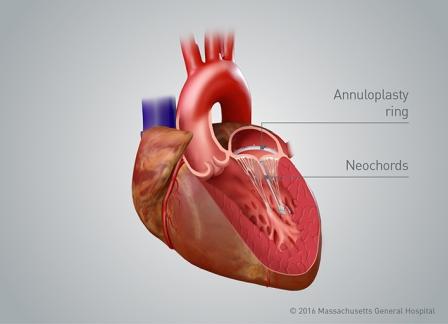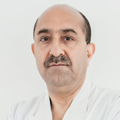Mitral Valve Prolapse
The mitral valve is an essential valve between the left atrium and left ventricle, and it controls blood flow between them. The mitral valve allows blood to flow forward from the left atrium into the left ventricle, but restrict backward flow. On the right side, the heart has a right atrium and ventricle, where blood flow controlled by the tricuspid valve.
Mitral valve prolapse is a condition of the heart, in which the valve between the left atrium and ventricle of your heart fail to close correctly. Your mitral valve made up of two triangular-shaped flaps of tissues known as leaflets. These leaflets connect to the cardiac muscle through a ring known as the annulus.
In mitral valve prolapse the leaflets of your valve bulge back into the atrium or upward when the heart contracts. With time, this leads to leakage of blood into the atrium. This is called mitral valve regurgitation, where the oxygenated and deoxygenated blood gets mixed before circulation to the body.
Usually, mitral valve prolapse might not require treatments or changes in lifestyle, if only a small amount of blood gets leaked into the atrium. It might not always be life-threatening. However, some people might need treatment.
People who develop symptoms of congestive heart failure caused by mitral valve prolapse with mitral regurgitation due to mitral valve prolapse, the surgery remain the treatment of choice. Valve surgery includes mitral valve repair and valve replacement.
Mitral valve repair

Mitral valve repair offers a very normal life to the patient since it doesn’t require lifelong blood-thinning medication and its results last much longer than animal valves. Mitral repair offers lower operative and long-term mortality than valve replacement, as well as the better preservation of left ventricular function and reduced risk of infective endocarditis.Mitral valve repair offers a very normal life to the patient since it doesn’t require lifelong blood-thinning medication and its results last much longer than animal valves. Mitral repair offers lower operative and long-term mortality than valve replacement, as well as the better preservation of left ventricular function and reduced risk of infective endocarditis.
Mitral valve repair surgery may include patching holes in a valve, reconnecting valve leaflets, removing excess valve tissue so that the leaflets can close tightly, replacing cords that support the valve to repair the structural support, and separating valve leaflets that have fused. Surgeons often may tighten or reinforce the ring around the valve (annulus) in a procedure called an annuloplasty.
Doctors may perform certain mitral valve repair procedures using a long, thin tube (catheter) and clips or other devices.
In one catheter procedure, doctors insert a catheter with a clip attached in an artery in the groin and guide it to the mitral valve. Doctors use the clip to reshape the mitral valve. People who have severe symptoms of mitral valve regurgitation and who aren't candidates for surgery or who have high surgical risk may be considered for this procedure.
Top Doctors In India For Mitral valve repair

Dr. Murtaza Ahmad Chishti
35 years of experience , Gurugram, Delhi/NCR, India

Dr. Surinder Bazaz
40 years of experience , Gurugram, Delhi/NCR, India

Dr. Vinayak Aggarwal
24 years of experience , Gurugram, Delhi/NCR, India

Dr. Vijay Kumar Chopra
42 years of experience , Gurugram, Delhi/NCR, India
Top Hospitals In India For Mitral valve repair
Jaypee Hospital, Noida
Established in : 2013
BLK Super speciality hospital, New Delhi
Established in : 1959
Artemis Hospital, Gurugram
Established in : 2007
Max Super Speciality Hospital, Saket, New Delhi
Established in : 2006






